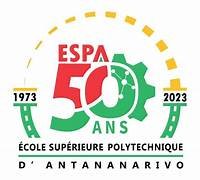DETERMINATION DE LA CONDUCTIVITE THERMIQUE DES PAVES PAR LA METHODE DU FIL CHAUD
RANDRIAMANAMPISOA Pierre Bénilde, Randrianarison Mino Patricia, Raheliarilalao Bienvenue
Résumé
La concentration croissante de la population dans les zones urbaines entraîne une expansion des surfaces minéralisées, provoquant des îlots de chaleur. L’albédo, qui définit la capacité des matériaux à réfléchir l’énergie solaire, joue un rôle important dans la gestion thermique de ces zones. Notre étude se focalise sur la détermination de l’albédo des quatre types des matériaux de pavage utilisés en aménagement extérieur. La méthode utilisée repose sur l’analyse numérique des images au moyen du logiciel Mesurim 2. Le but est de comparer les résultats avec les valeurs issues d’expérimentation mettant en œuvre des dispositifs classiques non numériques de la littérature. Les résultats obtenus montrent que les valeurs de l’albédo de nos pavages oscillent entre 0.05 et 0.26. Les pavés de béton ayant l’albédo le plus élevé et les pavés de déchets plastiques le plus bas. Les écarts relatifs entre nos résultats avec ceux des mesures expérimentales in situ sont relativement faible, soit 5 %.
Albédo, Analyse numérique d’images, Ilot de chaleur urbain, Mesurim 2,, Pavages
References
Références
Akbari, H. (2005). Energy Saving Potentials and Air Quality Benefits of Urban Heat Island Mitigation. USA: United States Environmental Protection Agency EPA.
Akbari, H., Pomerantz, M., Taha, H. (2001). Cool surfaces and shade trees to reduce energy use and improve air quality in urban areas. In Solar Energy. 70 (3): 295-310.
Akbari H., Surabi M., Arthur R. (2009). Global cooling: increasing world-wide urban albedos to offset CO2. In Climatic Change. 94 :275–286. USA.
Bouyer, J. (2009). Modélisation et simulation des microclimats urbains : étude de l'impact de l'aménagement urbain sur les consommations énergétiques des bâtiments (thèse de doctorat). École Nationale Supérieure d’Architecture de Nantes.
Carlos-Wilber P., Joan-Lluis Z. (2017). Technical Evaluation of an Improved Paint Coating with NIR Pigments Designed to Reduce Thermal Discomfort Caused by Incident Solar Radiation: Application in the Caribbean Area. In Energy Procedia. 115: 463–479.
Doulos, L., Santamouris, M., Livada, I. (2004). Passive cooling of outdoor urban spaces. The role of materials. In Solar energy. 77(2): 231–249.
Filippo P., Concettina M., Marinella G. (2017). Pavement albedo and sustainability: An expermental investigation. https://www.researchgate.net/publication/284726139
Gabriel T., Cathérine N., Donatien K. (2020). Estimation de l’albédo de surface avec LANDSAT 8 OLI : Application sur la scène de la ville de Lubumbsashi et ses environs. In Geo-Eco-Trop. 44 : 459-465.
Gabrielle D., Michel E (2005). Variabilité spatio-temporelle de l’albédo. Analyse menée à la résolution métrique. In Bulletin de la Société géographique de Liège. 46: 27-35.
Giuseppe R., Paola I., Michele Z. (2018). Lighting implications of urban mitigation strategies though cool pavements: Energy savings and visual comfort. In Climat. 6,26.
Golden, J. S., Carlson, J., Kaloush, K. E., Phelan, P. (2007). A comparative study of the thermal and radiative impacts of photovoltaic canopies on pavement surface temperatures. In Solar Energy. 81: 872–883.
Hailu Y., Kai Y., Yinghao M., Linbing W., Chen Y. (2020). Comparison of potential contribution of typical pavement materials to heat island effect. In Sustainability. 12, 4752.
Hendel M., Morgane C., Arnaud G., Youssef D. (2015). Quel est le meilleur revêtement pour limiter la formation des îlots de chaleur urbains. France : APUR.
Institut Bruxellois pour la Gestion de l’Environnement (IBGE) (2011). Choisir les matériaux de revêtement de sol en fonction de leur impact environnemental. Bruxelles.
Roesler J., Sushobhan S. (2016). Impact of pavements on the urban heat island. USA: Centre for Highway Pavement Preservation.
Rosenfeld, A.H., Romm, J.J., Akbari, H. & Pomerantz, M (1998). Cool communities: strategies for heat islands mitigation and smog reduction. In Energy and Buildings. 28(1): 51–62.
Santamouris M. (2013). Using cool pavements as a mitigation strategy to fight urban heat island. In Renewable and Sustainable Energy Reviews. 26: 224–240.
Shengyang W. (2015). Pavement albedo assessment: Methods, aspects, and implication. Iowa State University.
Synnefa A., Theoni K., Niki G., Santamouris M. (2008). Measurement of optical properties and thermal performance of coloured thin layer asphalt samples and evaluation of their impact on the urban environment. Greece.
Oke, T. (1976). The distinction between canopy and boundary layer urban heat islands. In Atmosphere. 14: 268-277.
Tina P. (2013). Pavement Temperature Effects on Overall Uran Heat Island (Thèse de doctorat). University of Arizonia.
Tzu-P., Andreas M., Ruey-Lung H., Ying-Che H. Effect of pavements albedo on long-term outdoor thermal comfort.


